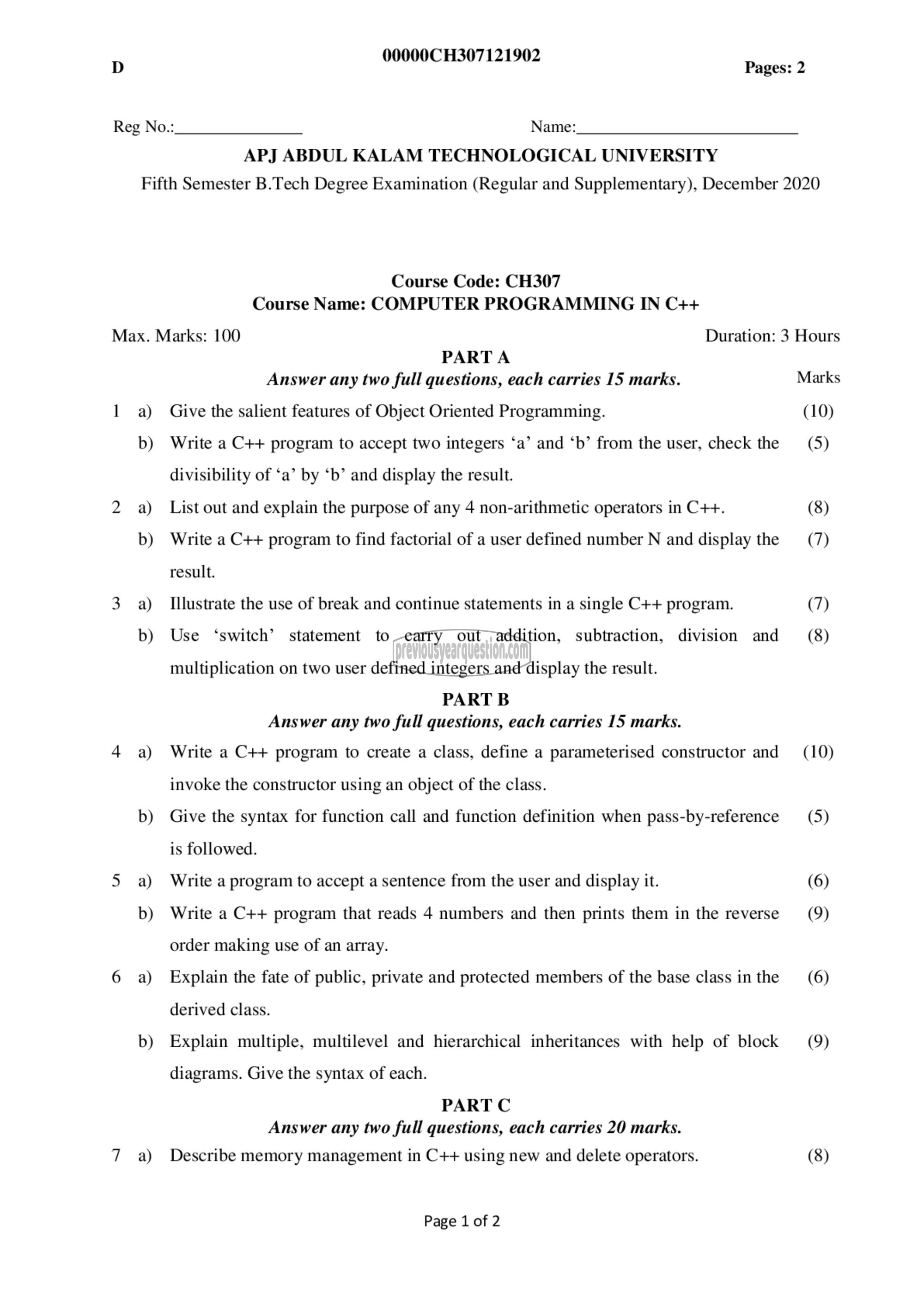APJ ABDUL KALAM TECHNOLOGICAL UNIVERSITY Previous Years Question Paper & Answer
Semester : SEMESTER 5
Subject : Computer Programming in C++
Year : 2020
Term : DECEMBER
Branch : CHEMICAL ENGINEERING
Scheme : 2015 Full Time
Course Code : CH 307
Page:1
D
00000CH307121902
Pages: 2
Reg No.: Name:
APJ ABDUL KALAM TECHNOLOGICAL UNIVERSITY
Fifth Semester B.Tech Degree Examination (Regular and Supplementary), December 2020
Max. Marks: 100
1 a)
b)
2 a)
b)
3 a)
b)
4 a)
b)
5 ஐ
b)
6 a)
b)
7 a)
Course Code: CH307
Course Name: COMPUTER PROGRAMMING IN C++
PARTA
Answer any two full questions, each carries 15 marks.
Give the salient features of Object Oriented Programming.
Write a C++ program to accept two integers ‘a’ and ‘b’ from the user, check the
divisibility of ‘a’ by “0” and display the result.
List out and explain the purpose of any 4 non-arithmetic operators in C++.
Write a C++ program to find factorial of a user defined number N and display the
result.
Illustrate the use of break and continue statements in a single C++ program.
Use ‘switch’ statement to carry out addition, subtraction, division and
multiplication on two user defined integers and display the result.
PART 0
Answer any two full questions, each carries 15 marks.
Write a C++ program to create a class, define a parameterised constructor and
invoke the constructor using an object of the class.
Give the syntax for function call and function definition when pass-by-reference
is followed.
Write a program to accept a sentence from the user and display it.
Write a C++ program that reads 4 numbers and then prints them in the reverse
order making use of an array.
Explain the fate of public, private and protected members of the base class in the
derived class.
Explain multiple, multilevel and hierarchical inheritances with help of block
diagrams. Give the syntax of each.
PART C
Answer any two full questions, each carries 20 marks.
Describe memory management in C++ using new and delete operators.
Page 1 of 2
Duration: 3 Hours
Marks
(10)
(5)
(8)
(7)
(7)
(8)
(10)
(5)
(6)
(9)
(6)
(9)
(8)
